-
Posts
1,211 -
Joined
-
Last visited
-
Days Won
48
Content Type
Profiles
Forums
Downloads
Gallery
Posts posted by Francois Normandin
-
-
-
QUOTE (Ton @ Dec 12 2008, 12:04 PM)
This will fail unless you make contact with an IDE version of LabVIEW, the LabVIEW runtime doesn't have a compiler included.Ton
Ahhh... And that's why those properties/methods are not available at runtime. (Somehow, I think it's the second time I ask a question that gets me this exact same answer
 )
)thanks Ton.
-
I've been trying to create a cluster dynamically using scripting, starting from a template VI that I modify before I launch it (Run). It works fine in the development environment but I just can't make it work in EXE. Since I cannot add or remove controls and indicators while at runtime, I thought I'd save my *.vit in the same folder as exe, call it, add the controls dynamically and then "Run VI". I guess it was too simple because it crashed my application everytime...
Can I do that at runtime at all? I know some properties and methods are not available at runtime... Are the OpenG's "Additional Application Controls" VIs available only in the development environment?
Here's a snapshot of what I'm trying to do.
-
-
-
QUOTE (Aristos Queue @ Dec 9 2008, 11:02 AM)
Um... Darth Vader's line was "It is useless to resist." "Resistance is futile" is Star Trek, not Star Wars.Man, what kind of geeks are we allowing on these forums these days?!
I was pointing out that it probably took a Star Wars fan not to know that the borgs' motto was "Resistance is futile" ... but you're right, if I were a real hardcore geek, I would have known it was from HHGG.
Sorry for the confusion!
-
QUOTE (crelf @ Dec 8 2008, 11:07 PM)
Actually, I was thinking of the Vogon in The Hitchhiker's Guide to the Galaxy and The Daleks in Dr. Who...I'm too young for those references...

I must kneel before thee. :worship:
-
I had the same errors once.
Check this. It partially answers your question (dynamical dispatch), but not why Share Clones vs Preallocate.
-
QUOTE (crelf @ Dec 8 2008, 07:13 PM)
I can see you're a Star Wars fan...
http://lavag.org/old_files/monthly_12_2008/post-10515-1228782281.gif' target="_blank">

-
-
Somehow I don't think this is a computer automated reply... but the idea is interesting :thumbup: . It reminds me of MIT guys that created an automatic computer science paper generator, and some of those completely foolish articles were accepted to conferences (fortunately non peer-reviewed).
It this case of doG (oups, a palindrome), I think a bot would make a lot of grammatical mistakes maybe, but not as many html style mistakes or orthographic errors as is the case . I would also be surprised if a bot could understand when it is being replied to explicitely, and when to ignore a reply that is not aimed at it directly.
This could be the best coding challenge idea I've heard so far...
-
QUOTE (Jarimatti Valkonen @ Dec 8 2008, 09:26 AM)
Hi,Does the TCP connection refnum have any properties? I'd like to be able to determine the remote end IP address from it. However, with LV8.5 it seems that I can't get any properties out of it. Any toughts on the matter?
You can't access any properties or methods for TCP in LabVIEW, they're not exposed. However, you can get the remote port and IP address when you use "TCP Wait on Listener". When a new connection is established, you get those properties along with the connection ID.
-
-
-
QUOTE (Yair @ Dec 4 2008, 11:45 AM)
So basically, you've overloaded the http://en.wikipedia.org/wiki/Operator#Convolution' rel='nofollow' target="_blank">Convolution operator to 2f+g? You're amazing! I hadn't thought of that...
-
5) Combine an existing control with the one you wish into a cluster. (if it makes sense)
This way, you don't change the layout of your conpanes.
The best way to achieve that is through Strict TypeDefs, if you happen to have one already.
As previously said, so many ways to skin a cat... but if you don't need to: They're so cute after all!
-
QUOTE (crelf @ Dec 2 2008, 09:00 AM)
PS: this strip is called "http://www.wetherobots.com/' rel='nofollow' target="_blank">we the robots" - he only makes around on e a week, but they're always funny
Nice... and especially the mood ring.


-
QUOTE (Neville D @ Dec 1 2008, 04:16 PM)
It might be slower because a buffer might need to be allocated for the remaining N-1 element array. Did you have that wired as well?There were no difference (or sub microsecond) for unwired index or 0-wired.
And I totally agree with your usage assessment. I, too, am lazy most the time...

EDIT: I didn't try wiring the DeleteArray index with (length-1)... (If we did, then the output changes from Scalar to Array)
-
QUOTE (OlivierL @ Dec 1 2008, 01:00 PM)
0.75 us/loop 0.234 us/loop 0.243 us/loop 0.425 us/loop 1.44us/loop
Based solely on execution speed, you should use the IndexArray(Length-1) method... but reversing the array is not bad for a 100-element array.
-
QUOTE (cromax @ Nov 27 2008, 06:42 PM)
helloI want to use get xy waveform function with the Aim to get the last value of waveform acquisition.
What index i can use in this function?
I read in a help that if i don't use any index i get the o component and not the last.
It's true?
thank you
Last index = length - 1
And yes, if you don't wire any index, you'll get the first result (index=0).
-
QUOTE (Justin Goeres @ Nov 25 2008, 10:49 PM)
But that only gets me the contents of the PATH environment variable.I'm talking about something like the following example of which in the OS X Terminal:
[18:58:35]$ which curl/opt/local/bin/curl
It returns the path to the curl binary. If curl isn't in the user's path (for instance, if it's not installed in the system), it returns nothing.
Obviously I could take the results of the VI you posted and list the directories recursively until I've either exhausted everything or found what I'm looking for, but I'm hoping there's a less brute-force solution than that.
I thought the Windows equivalent "which" function was doing a recursive search too. I'm no expert on that, so I'll have to pass.
<guilty>I never even worked on Mac or Linux...</guilty>
-
QUOTE (Justin Goeres @ Nov 25 2008, 07:00 PM)
There's a function in kernel32.dll to get the list of environment variables. (GetEnvironmentVariableA)
Download File:post-10515-1227661495.zip (saved for LV 8.5)
-
Here's a little help.

-
Hi Dennis,
it's totally doable. It's in fact much easier than you think it could be. Installing a card to multiplex your RS-232 ports will give you as many COM ports you need. Use Measurement Automation Explorer to configure them and use Instrument I/O Assistant to get started. (Instrument I/O palette)
QUOTE (jgcode @ Nov 25 2008, 08:34 AM)
Which ever hardware platform you choose, from your current spec you will need at least serial 17 ports.Or daisy-chaining the equipments if some are compatible with this control method.



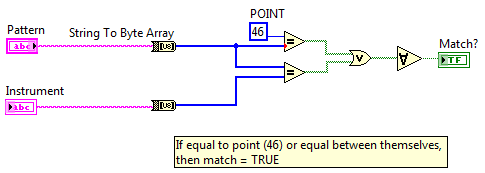
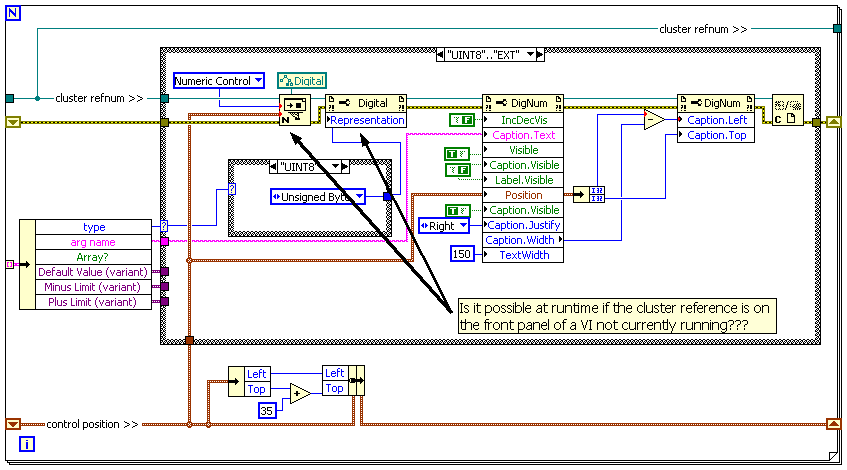
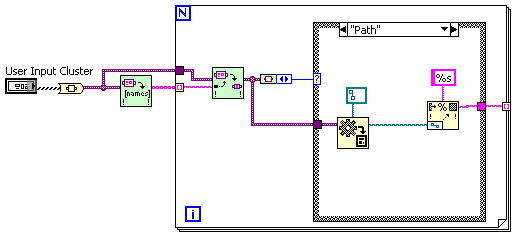
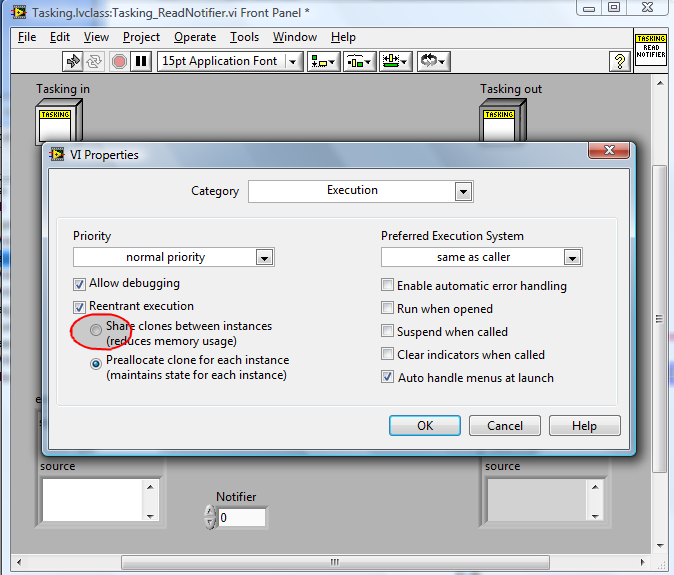
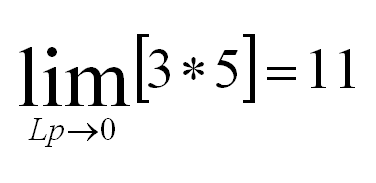





Boolean pattern matching, with a wildcard
in LabVIEW General
Posted
Don't you guys think that converting the string to boolean array is the real bottleneck here???
All implementations of arrays/matrices and case structures will be fast enough, but I would bet that "Convert String to Byte Array" is faster than looping a string with "array subset" to extract the booleans. So if one must stream the instrument status bytes as fast as possible, then it's the string conversion that would concern me. :2cents: